How to properly grow Motley grapes?
Grape - the kind of crop that almost all gardeners want to grow. It can be planted both for harvesting and for decorating a decorative building in the form of a gazebo or a closed corner of the garden. One of the new varieties, bred not so long ago, is the "Variegated" grape. Many connoisseurs of culture do not know him yet, so it is worth getting to know him better.
Content:
Features of grapes
The grape "Motley" was bred under the guidance of an amateur breeder Gusev SE .. The variety was obtained by crossing such eminent varieties as Kishmish radiant and Talisman. By combining parental species of weaving bush, a completely new hybrid cultivar was created.
Its distinctive feature is its early ripening period.
Tests for yield, timing of yield were carried out in the Volgograd region. The roots feed well from the ground, while expelling young shoots at a fast pace. This indicates an excellent vigor of root growth. The period of full ripening of the berries occurs during the growing season of 100-105 days from the moment the first young leaves bloom. This is almost 10 days earlier than the well-known early variety "Codryanka".
The flower in grapes is bisexual, that is, the shrub does not need a close proximity of a specimen similar in terms of flowering time. The plant is self-pollinated, further bringing in solid yields. The appearance of the bunch is presented in the usual form, but sometimes it can be complemented by a protruding wing.
Ripe berries have a conical shape, elongated towards the end. The fruit itself is large, slightly oval, not exceeding 2.6 x 2.4 cm in size. The weight of each berry is from 8 to 10-12 grams. According to the analysis of the sugar content in the berry, a fairly high figure of 25% of the total content was obtained. Ripe berries have an original pink hue. Inside, the pulp is dense, fleshy; when biting off, a characteristic crunchy sound is emitted. The aftertaste gives out a memorable bright nutmeg taste. Connoisseurs of taste at the grape tasting gave him a grade of 8.8 points.
Growing conditions
The development of grapes begins in early spring, when the air temperature warms up to + 8-10C. This moment is characterized by swelling of the growth buds, active sap flow and leaf opening. The most optimal temperature for grapes "Variegated", when the shoots are actively growing, the formation of a flower ovary and the appearance of fruit clusters begins, is fixed at + 15- + 30 C. If the temperature drops to +10 C and below, the development of the shrub slows down significantly or stops altogether.
The shrub should be planted in a well-lit place, where there is a lot of sunlight and there are no cold drafts.
If you place the bush on a darkened area, you may not wait at all for the harvest. It is advisable to land on the south side or under a building wall. This will keep the plant from losing heat. Immediately a support or arbor is formed under the young vine. In order for the overgrown plant to receive maximum sunlight in all corners and places, periodically spend pruning... It allows you to thin out overgrown shrubs, free clusters, creating conditions for them to ventilate and get enough sunlight.
The "Motley" grape does not differ in its capricious disposition, it grows well both on sandy lands, so it can get along well on a rocky substrate. When planting on chernozems, it develops a fibrous root systembranching well. In such conditions, the roots do not need to go to the interior of the earth to search for nutritious moisture. Rhizomes are located almost on the surface of the soil.
Planting a seedling
Planting of young seedlings "Motley" can be carried out in autumn and spring. If there is a one-year-old sprout with a lignified trunk, then it can be rooted in early April, until the end of May. From the beginning of summer until the end of August, there is an opportunity to root green young stepchildren.
In the fall, you can also root, but in this case it is necessary to carefully prepare the seedling for wintering. For these purposes, the soil around the cutting is wrapped sawdust, peat or pine needles. It is also necessary so that rodents or other pests do not damage the bark of the sprout in the winter. If the upper layers are damaged, young animals can get sick or even die from sudden temperature changes.
Only healthy young vine is taken for planting. To make sure of the quality of the planting material, a visual examination of the cuttings is carried out:
- When cutting the seedling, the white inner flesh should be visible at the base of the cut. If the stalk has a brown content under the bark, then it should be thrown away or burned. This seedling is diseased and unsuitable for planting.
- If a cutting is taken that was placed on rooting a year ago, then it should have a ripe cut that gives off a bright green tone.
- A healthy cutting can be tested for the quality of the buds. If they do not fall off the stem when touched, this indicates the suitability of the seedling.
Landing rules and features:
- Before the sprout is planted in open ground, it must go through a certain procedure. The stalk is cut in such a way that only two internodes remain on the body of the vine. Moreover, it is required that the lower node is at a distance of 1-1.5 cm from the end of the cutting, and the upper one is located 2 cm lower from the upper cut.
- Exactly 24 hours is required to soak the stepson before disembarking in a growth activator. It can be either the chemical preparation Kornevin or a spoonful of honey diluted in water.
- After soaking, both cuts are treated with garden varnish or paraffin. This is necessary so that by placing them in a cold room for a month, harmful bacteria and uninvited guests in the form of parasites do not settle inside the trunk.
- The next stage of planting in a container for germinating roots.
- For planting, they dig a depression in the ground to a depth of 80 cm, the width should be the same size. A mixture of humus and a fertile substrate is placed at the bottom.
- The next layer is laid out mineral dressing in the form of potash fertilizer (300 g), wood ash (1 l.), superphosphate (300 g.). Next, half of the excavated earth is laid out. The total volume of the pit should be occupied by an average of 50 cm.
- In this state, the groove is left for 1 month to fully saturate with nutrients.
- After the set time has passed, the prepared grape stalk "Variegated" should be planted. Its roots should be straightened and covered with a dense layer of the remaining earth.
- The soil must be carefully compacted and watered abundantly.
Care Tips
In order for the "Motley" grape to develop qualitatively, grow quickly and give abundant harvests, it is necessary to follow several rules for its care:
- In early spring, it is required to carry out a dry garter - for this it is necessary to carefully tie all the shoots that have grown last year to a trellis or support.
- At the beginning of March, pruning extra shoots. In autumn, pruning is carried out only as preventive measures against diseases.Full pruning is required in the spring. After winter, you need to cut off frozen or spoiled shoots.
- Pinching. The procedure is recommended to be performed one week before flowering. This action provokes the growth of axillary buds, thereby the bush begins to branch, and not pull out a single shoot.
- Regulate the number of inflorescences. In order for the harvest to be of high quality and large, you should break off the extra bunches with the outlined flowering. The shrub will not waste energy on growing small berries, but will direct it to a smaller volume.
- Periodically carry out a fragment of unnecessary leaves. During the ripening period of the berries, it is required to clear the thickets of leaves. They interfere with the penetration of sunlight on the bunches. Thus, depriving the fruit of sweetness.
- It is required to make periodic feeding - the beginning and after flowering, before the moment of ripening.
Thus, in order to achieve good results at the end of the fertile season, you should not be lazy and let the development of an interesting grape variety take its course. If you do not complex activities, then the grapes will delight you with large and juicy berries.
Diseases and pests
The "Variegated" grape is a fairly resistant variety to various diseases and pests. He is not susceptible to such ailments as mildew, gray mold powder. But there are times when a plant unexpectedly becomes infected with an ailment or is colonized by parasites. You need to know what and how to deal with.
The following types of diseases and harmful insects are distinguished:
- Grape and grape leafworm - arrange their wintering at the base of the roots of a fruiting bush. In the spring, the caterpillar begins to eat young leaves, and then moves to the formed clusters. An obsolete caterpillar crawls into cracks in the bark and lays eggs, from which butterflies hatch. The fight against them is carried out by spraying with insecticides.
- Spider mite - feeds on the delicate sap of the leaves, sucking it from the cutting and the plane of the greenery. The leaves turn yellow, curl and fall off. It is possible to identify the appeared parasite by the stuck cobwebs. It should be influenced by chemical preparations aimed at fighting insects.
- Grape mite - the lesion is noticeable when the leaf is covered with a white waxy coating and cracks. The insect helps to stop the growth of the shrub, inhibition of the development of fruits and the complete absence of further harvest. It should be sprayed with Nitrafen solution or Actellic.
- Apoplexy is an incurable disease of a bacterial nature. The bush quickly begins to wilt, it cannot be saved, it is provoked by bacteria containing poison for grapes. There is no fight against the disease, you should only follow the rules of care.
- Anthracnose - the appearance is fixed at high humidity. Rotten spots appear on a healthy leaf, dried up and forming voids. The leaf tends to dry out or deform. The berries are affected by gray or brown spots, begin to crack, the bunches completely dry out. To destroy the infection, it is required to carry out periodic pruning, neutralization of all damaged fruits and greens. In addition, it is imperative to spray with Ridomil or Acrobat.
To avoid any harmful manifestation on a young and interesting variety "Variegated", it is only necessary to control its development and growth. If the first signs of a disease have been outlined or a pest has been noticed, you should not expect an increase in the number and volume of ailment. It is necessary to immediately carry out control and prevention measures.
More information can be found in the video:



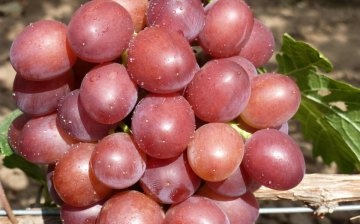
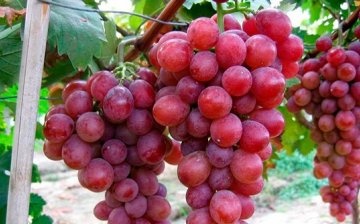


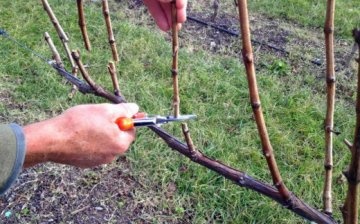
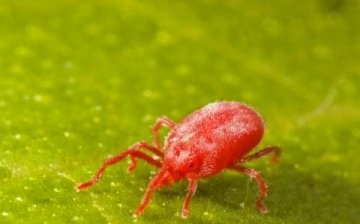






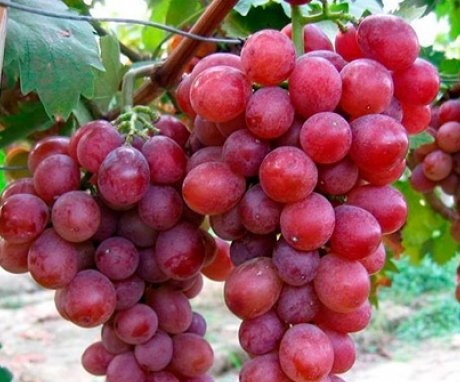
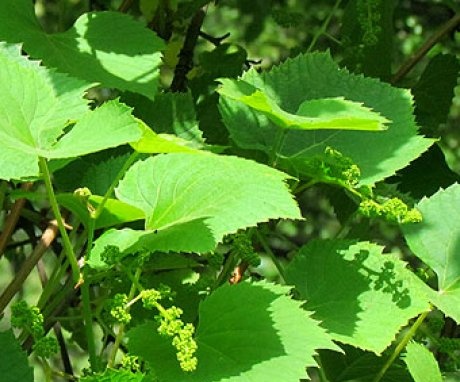
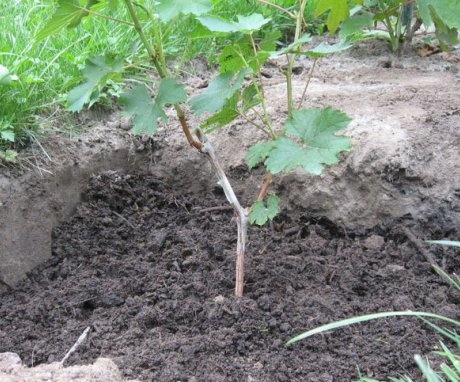
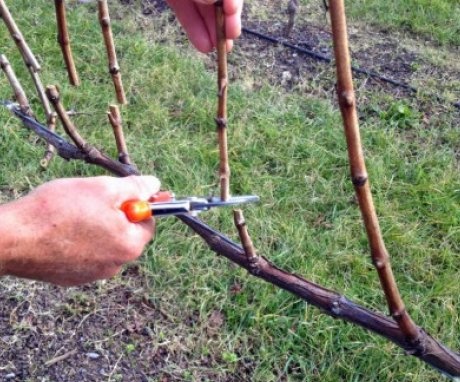
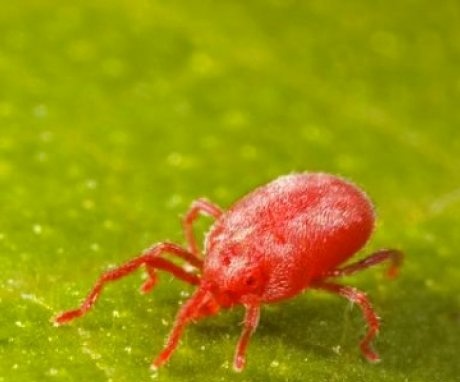
In order for the grapes to grow well and be large, you need to prune the vine on time. In addition, drainage is required, and watering should not be done superficially, but through pipes installed in the drainage layer.
Tell me, do your lips itch after this grape? We planted grapes, everyone said that it was good, but it grew, it is only suitable for wine, the wine, of course, turns out to be very tasty, but we want to eat grapes.